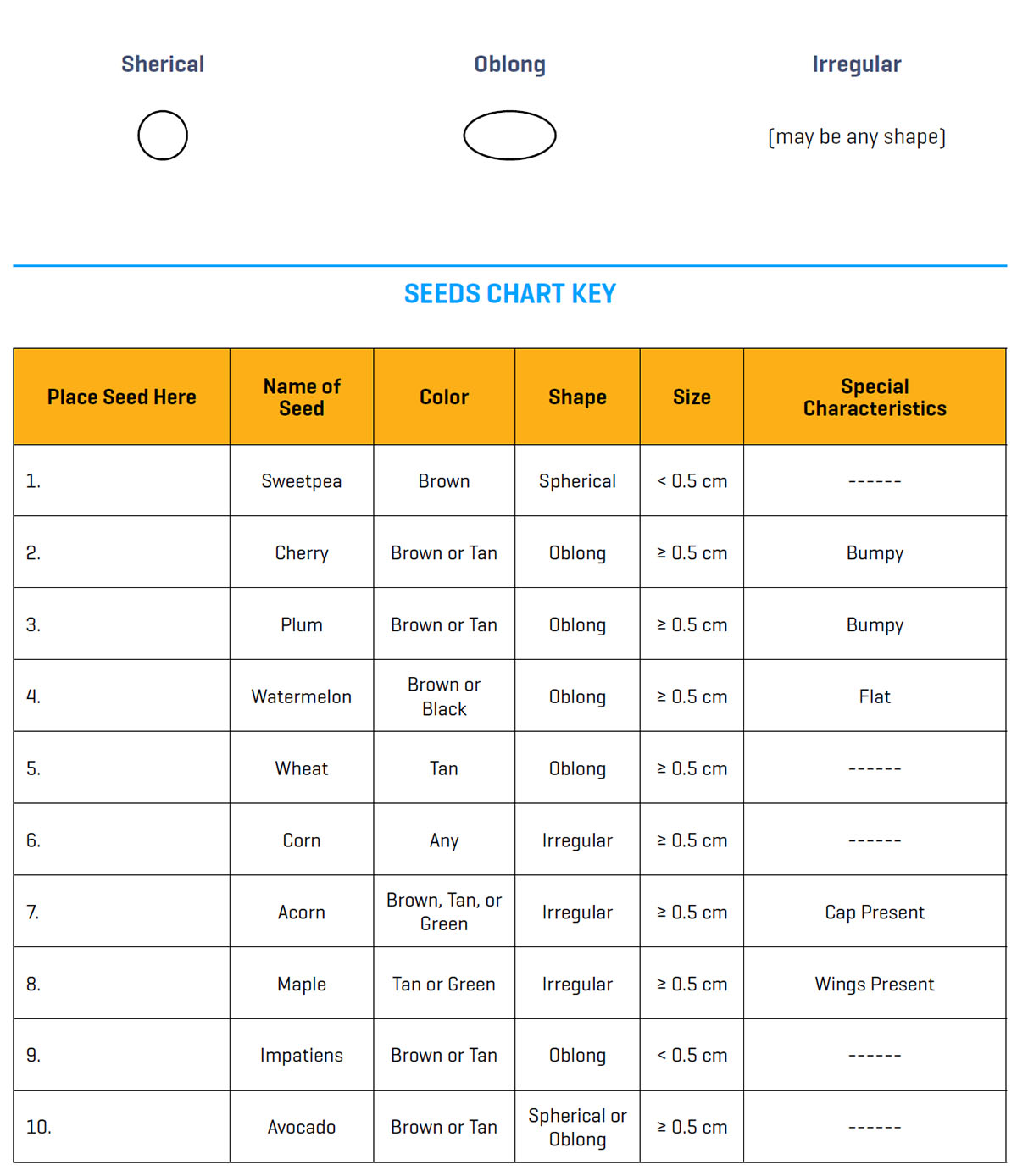Elementary | Sponsored By: Corteva Agriscience
Secrets of Seeds

Is Lesson Plan Lesson Plans Life Science Elementary
Adapted from Secrets of Seeds by Karen Ansberry and Emily Morgan
Science & Children | February 2009 |Vol. 46 Issue 6
Objective
For Grades K-2: Needs of Seeds
Students will observe seeds, match them to the fruits from which they came, and discover that seeds need water and warmth to germinate.
For Grades 3-5: Seed Investigations
Students not only match seeds with their corresponding fruits or vegetables using a dichotomous key, they will also design investigations to answer questions that they generate about seeds
- Avocado pit
- Whole avocado
- Knife
- Four toothpicks
- Container of water
- Variety of fruits and seeds of fruits
- Seeds by Vijaya Khisty Bodach
- Container filled with potting soil
- Paper towel
- 1-gallon zipper bag
- Measuring cup
- Water
- Cucumber or radish seeds
- Variety of seeds featured in Seeds by Ken Robbins
- Hand lens
- Ruler
- Seeds Chart Key
- Seeds by Ken Robbins
- Sentence strips
Activity Outline
For Grades K-2: Needs of Seeds
- Engage: Show students an avocado pit without identifying it. Pass it around the room and have them make observations and inferences about it. Then slice a whole avocado fruit in half to reveal the pit. Explain that it is a seed that grows into a tree that produces a fruit called an avocado. Clean off the avocado pit and then stick four toothpicks into its sides to a depth of about 5 mm. Set the toothpicks on the rim of a container of water so that the pit is half-submerged in the water with its pointed side up.
- Explore: Give each pair of students an assortment of seeds from different fruits. Ask them if they think all of these seeds will grow into the same kind of plant, and to predict what kind of plant each seed will become. After they have had time to make predictions, give them the whole fruits and have them try to match up the seeds with the fruits.
- Explain: Have students explain how they determined which seed would grow into which kind of plant. Open one of each fruit so students can see the seeds, asking students to check their matches and correct any they had wrong. Show them the book Seeds by Vijaya Khisty Bodach. Ask students to listen for what seeds need to grow as you read aloud.
- Elaborate: Have students recall the needs of seeds (sun, soil, water) and make predictions about the following: plant several seeds in a pot and the same number of seeds on a dry, flat paper towel inside a clear, sealable plastic bag. Explain that it is important to keep the experiment ‘fair’ by giving all the seeds the same amount of water. Pour the same amount of water into both the pot and the baggie, and place them near a sunny window. Have students make daily observations; after a few weeks, the seeds in the soil will appear more healthy than the seeds on the wet paper towel. Students can then conclude that seeds, once they have germinated, need soil to grow into healthy plants.
- Evaluate: Ask each student to bring in a seed and write a riddle about what the seed grows into. The riddle should include three clues, the needs of the seed, and the question, What am I? Students can attach the seed to the top of the page, and then write the answer at the bottom and cover it with a liftable flap of paper.
For Grades 3-5: Seed Investigations
- Engage: Give each group of 2-4 students a variety of the seeds featured in the book Seeds by Ken Robbins and ask them to observe the seeds with a hand lens, measure them, and predict what kind of plant each will grow into.
- Explore/Explain: Give students a copy of the Seeds Chart Key and introduce it as a special tool that scientists can use to identify unknown objects. Direct students’ attention to the column headings and the pictures. Remind them that the first thing they should do when using a key is to look at any pictures, labels, or headings. Students should then try to identify each seed using the key. Then, read the book Seeds by Ken Robbins aloud to the class. Each seed is named and pictured in the book, so students can check their answers as you read.
- Elaborate: Ask each pair of students to write a seed question on a sentence strip. Collect all of the sentence strips and read the questions aloud to the class. Explain that the type of investigation a scientist does depends on the questions he or she asks. As a group, sort the students’ questions into ‘researchable questions’ that can be answered using reliable sources of scientific information, and ‘testable questions’ that can be answered by observing, measuring, or doing an experiment.
Researchable questions: How do squirrels find the acorns they bury? What is the world’s largest seed? What is the difference between a fruit and a vegetable?
Testable questions: How long does it take for an avocado seed to sprout? Do larger watermelons have more seeds than smaller watermelons? Will popcorn kernels from the grocery store grow into corn plants?
- Evaluate: Each group of 2-4 students selects one of the testable questions and discusses ways to investigate the questions. After designing their investigation and collecting data, they can brainstorm ways to communicate their results (pictures, data tables, graphics, etc.) Have students share their findings with the class.



